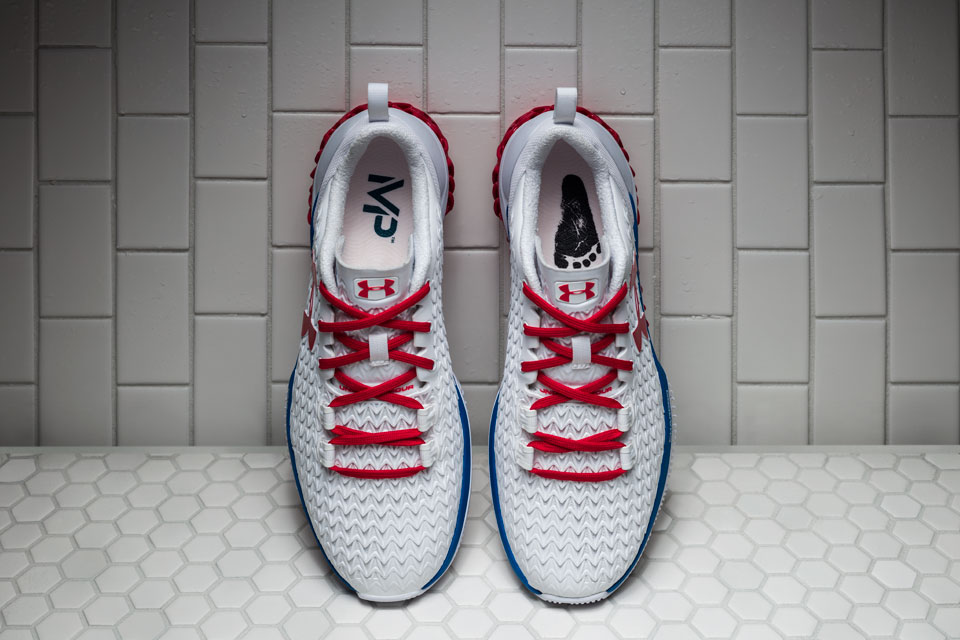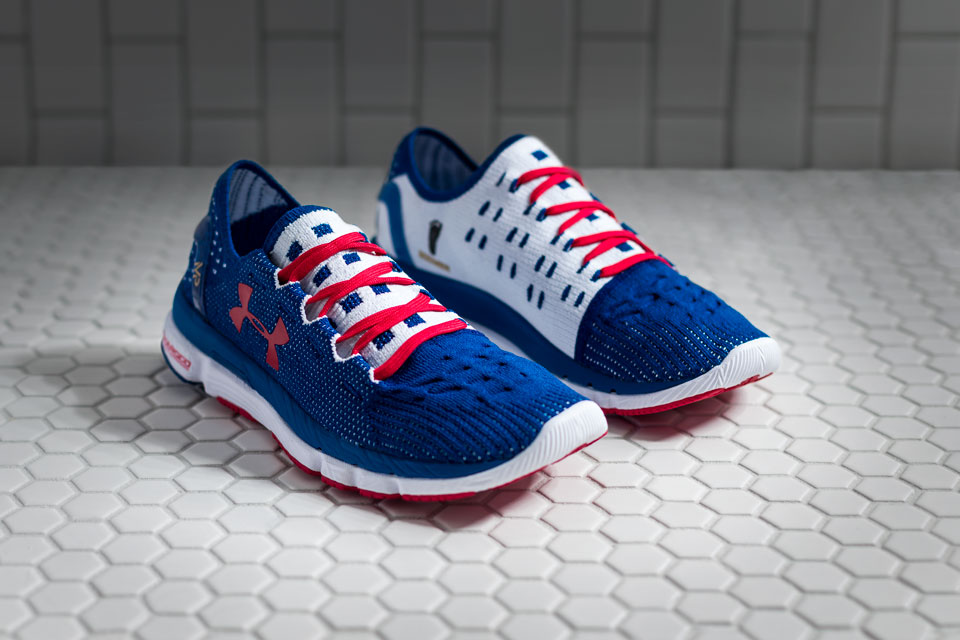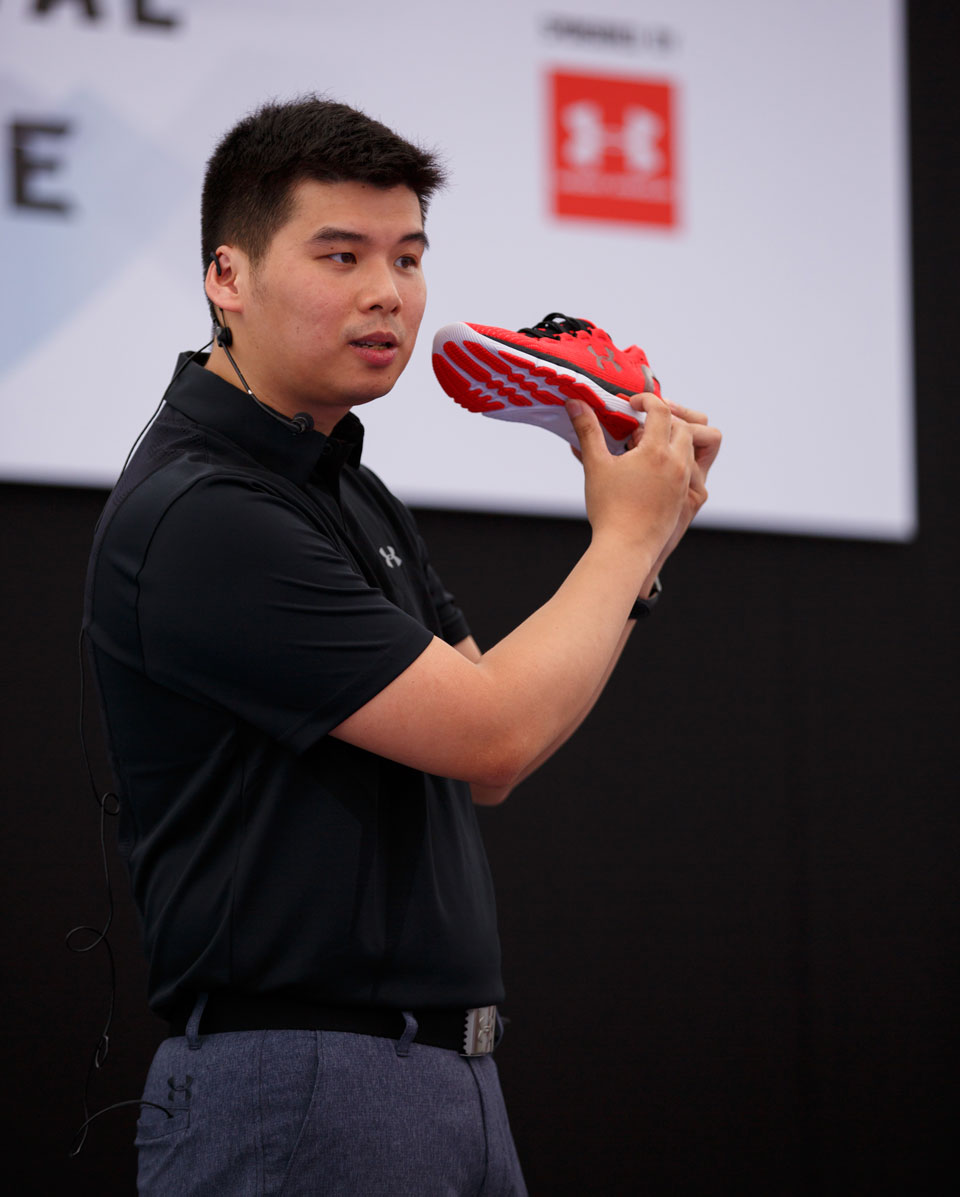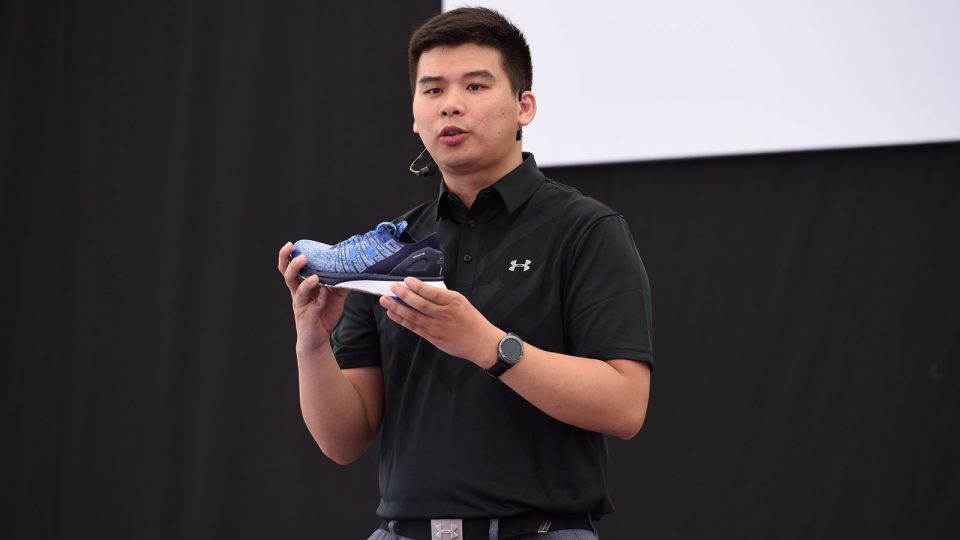Vincent Chen is the Senior Development Manager of Innovations for Under Armour’s footwear division, and if you are intrigued by the word “innovation,” it’s probably because it’s synonymous with other powerful words, like originality, revolution and discovery.
As a shoe developer, he knows a thing or two about product ideas that work — and those best left undeveloped! Working with an equally bright team, his keen insights make Under Armour footwear the brand to watch now and in the future.
RS: Why did you decide to join Under Armour?
Vincent: It was 2010 and I found UA’s footwear business to be exciting and attractive, so I became the brand’s first footwear innovation team member based in Asia.
RS: What technology should our readers look for in future UA shoe designs?
Vincent: We’re developing multiple footwear technologies that lead to precision fit, smarter performance and more advanced manufacturing techniques. For example, we launched a 3D printing process called Architech in March and provided a colourway to Michael Phelps for the Rio Olympic Games.

RS: Can you say more about the 3D printing technology you call Architech?
Vincent: It gives us mass customisation capability and modernises the manufacturing process. When traditional midsoles are produced, there’s no leeway for differences in fit. With 3D printing, no mould is required; shoes are customised using software to adjust construction parameters. We end up with shoe styles made for different performance needs.
RS: How has this changed the way UnderArmour produces athletic shoes?
Vincent: To adapt this new technology for large-scale production, everything associated with the process needed updating, including machinery, material, design, finishing, CAD engineering and more. Because it’s so new, our team must use our guts, knowledge and creativity to make adjustments on the fly.
RS: Can you share insights about the new Slingshot and Slingride models?
Vincent: These are great examples of our pioneering knitting technology. When a traditional upper is made, the factory orders rolls of fabric and uses industrial dyes to cut pattern pieces before stitching them together using a sewing machine. Our new knitting technology uses fibre/thread to originate the upper directly, skipping the step in which fabric must be cut and sewn together.
RS: What other details should we look for?
Vincent: Look closely at the Slingshot upper. You can detect different knitting details and stretching. This is done in one step using a single stitch line to join the upper. We also produce seamless 3D heel cups, so you can see how much innovation goes into our newest athletic shoes.

RS: Will all of this technology drive up the price of your shoes?
Vincent: No. As a matter of fact, there could be cost savings thanks to Under Armour’s new knitting technology that turns thread into the shoe upper directly, so there’s no need to knit the textile. This results in reduced steps and there’s less waste. Under Armour will continue to offer good value at affordable prices.
RS: How does Under Armour come up with all of this new technology?
Vincent: We have a dynamic innovation team made up of designers, developers, bio-mechanic testers and other experts. Everyone is responsible for exploring new, interesting ideas. Once we find something worth pursuing, we collaborate to develop solid concepts, testing frequently to make sure the idea is viable. Our team members talk to each other a lot during the process.
RS: Are you saying that innovation isn’t a new way of doing business for Under Armour?
Vincent: Exactly. We’ve been in the innovation business for over 50 years. It started when we first used Speedform technology pioneered by the International Latex Corporation (Playtex). The company developed the Apollo spacesuit, and when our Vice President of Footwear Innovation Kevin Fallon read the book “Spacesuit Fashioning Apollo,” he wondered why UA couldn’t apply the same principles to making running shoes. We started collaborating with our lingerie factory Regina Miracle and two years of trial and error later, Under Armour Speedform technology was born, which led it to be the first running shoes to be produced in a bra manufacturing factory.

RS: What challenges do you face as an “innovating” team and company?
Vincent: The whole innovation process is just that — a process. We envision the universe’s limitless possibilities, explore the darkness and grab every glimmer of light. During the journey, we eliminate ideas that don’t work, share results, listen to each other and stay humble and patient. We think of failure as a friend because that’s what ultimately leads to success.
RS: How does Under Armour stay competitive?
Vincent: Under Armour’s vision is to empower athletes everywhere. We believe that we can make our athletes better through passion, design and the relentless pursuit of innovation. We may have started as an apparel company, but we’ve brought that “DNA” into our footwear division and we don’t mind chasing the big guys. Competition makes us stronger, humbler, hungrier and smarter. That’s what happens when you partner with the most intelligent minds on the planet!
Has Vincent Chen discovered the secret to future UA footwear successes? The answer is yes. His team is fortunate to be given carte blanche to explore new materials and methods and test the ideas that make the cut.
Just knowing how much freedom Under Armour gives his team is reason enough to keep an eye on this company’s new products and exciting future!




